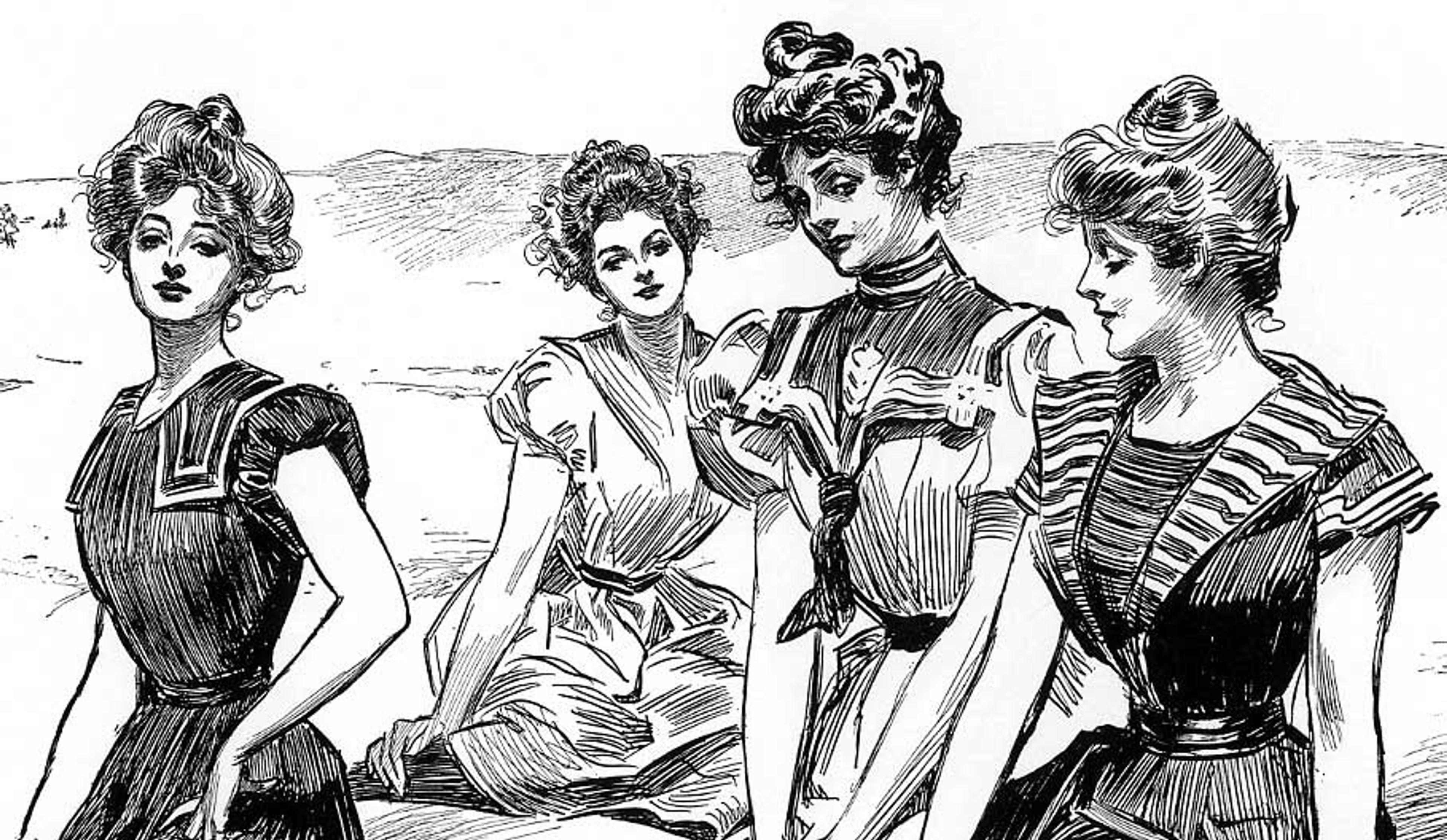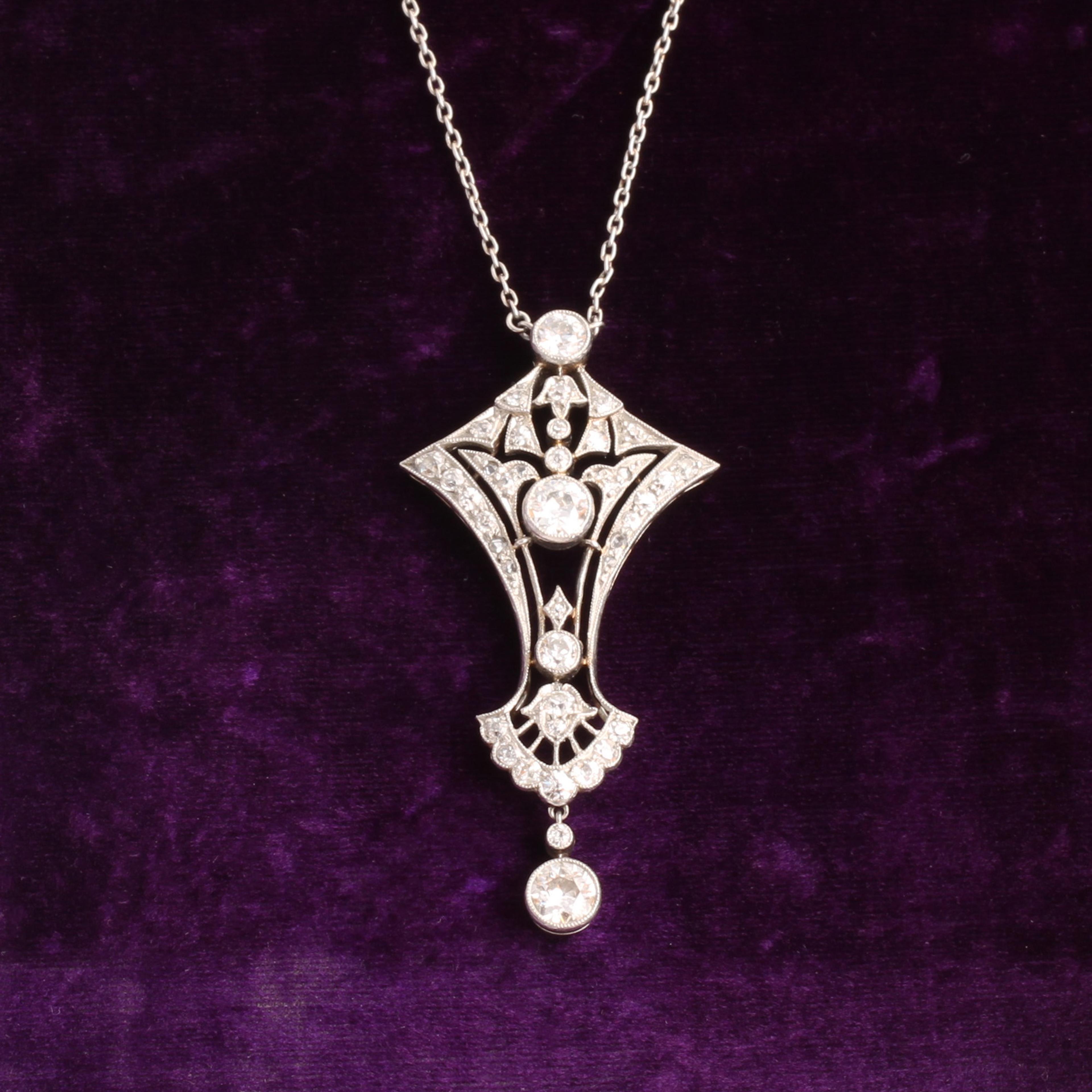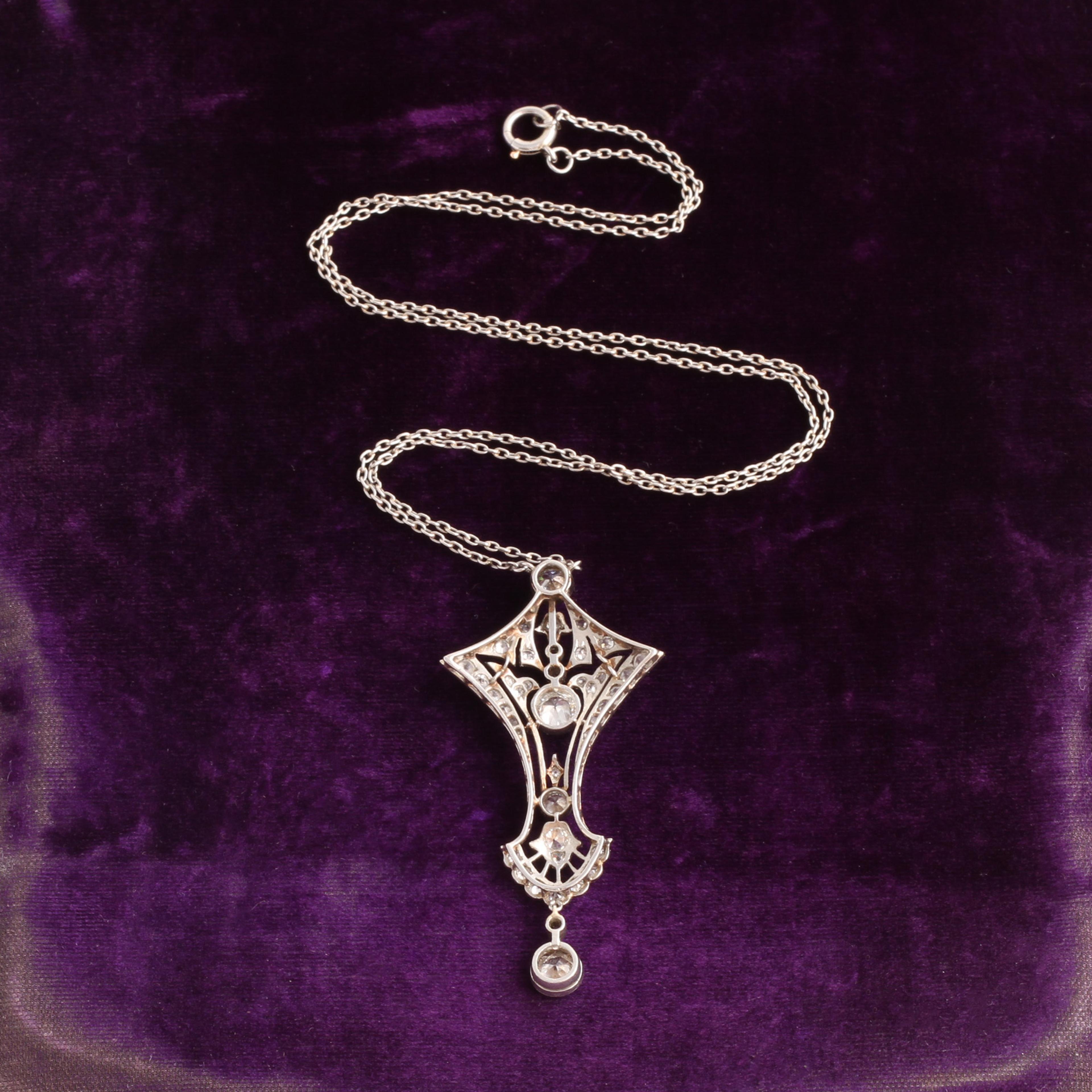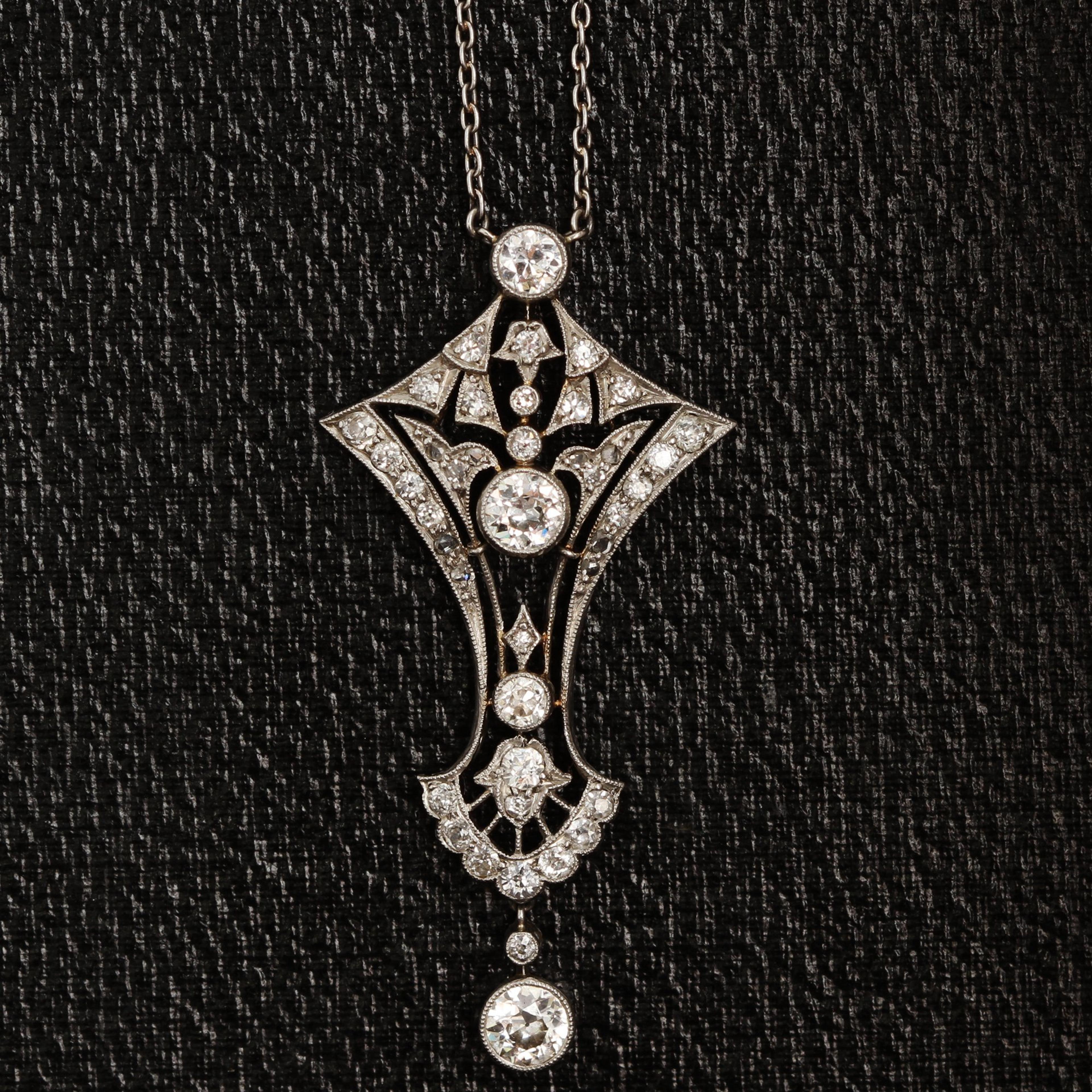The lavaliere - a chandelier style pendant suspended from a fine chain or cord - is named for the Duchess Louise de La Valliére, paramour of King Louis the XIV from 1661-1667. Popular among the gentry in the 17th century, the lavaliere fell out of fashion for a couple centuries, but returned to fashion in the Edwardian period. The popularity of the necklace was (in part) revived after being famously worn by French actress, Eugénie Marie Pascaline Fenoglio, who took her stage name, Ève Lavallière, after the style of necklace.
thedetails
- Materials
Platinum, approximately 2ctw diamonds (old Euros largest from top: .17ct, .29ct, .10ct, .33ct; 8 x .04ct, 21 x .03ct; 8 x 1mm rose cut diamonds).
- Age
c. 1910
- Condition
Excellent.
- Size
Pendant 1 3/4" x 7/8", 15" chain.
Need more photos?
Send us an email to request photos of this piece on a model.

Aboutthe
EdwardianEra
1900 — 1910
The jewelry tended toward airy lightness, often in the form of lacy filigree. The world was changing rapidly, but lots of the jewelry still reflected the Victorian ideals of decorum and femininity. Ancient Roman and Greek influences remained popular. “White” jewelry became popular as plentiful deposits of platinum were discovered in Russia and improved smelting technology made it possible for jewelers to work in the noble metal. Platinum was seldom used by jewelers in earlier years owing both to its scarcity and high melting point. The jewelry trade took advantage of its rigid strength to create opulent openwork settings for increasingly brilliant diamonds. The old European cut was perfected, rounder and squatter than old mine. This took stone-cutting one step closer to the mathematically perfect round brilliant cut, which is the most popular diamond cut today. The now-iconic square Asscher cut was patented in 1902. Hot on the heels of platinum, the alloy mixture that produces white gold was formulated and patented in 1915 in New York City. With Europe in the grip of WW1, the American jewelry industry was poised to become a world leader and innovator.


